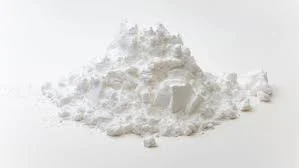Titanium dioxide (TiO2) is a widely used compound that finds extensive applications in various industries. One such industry that greatly benefits from the properties of titanium dioxide is the ink industry. In this article, we will explore the diverse applications of titanium dioxide in the ink industry and discuss how it enhances the quality and performance of inks.
Understanding Titanium Dioxide
1.1 The Chemistry of Titanium Dioxide:
Titanium dioxide is a naturally occurring oxide of titanium, with the chemical formula TiO2. It exists in three primary crystalline forms: rutile, anatase, and brookite. Rutile is the most common form, known for its excellent brightness and opacity.
1.2 Properties of Titanium Dioxide:
Titanium dioxide exhibits remarkable properties that make it highly suitable for ink production. It is an excellent white pigment, offering exceptional opacity and brightness. Additionally, it has a high refractive index, making it effective in scattering light and providing vibrant and long-lasting colors to inks.

Applications of Titanium Dioxide in the Ink Industry
2.1 Opacity and Whiteness Enhancement:
Due to its inherent whiteness and opacity, titanium dioxide is used as a key ingredient in white inks. By incorporating titanium dioxide into the ink formulation, manufacturers can achieve better coverage and brighter whites on various substrates. This property is especially crucial for printing on dark or colored surfaces, where achieving opacity is challenging with other pigments.
2.2 UV Protection:
Inks containing titanium dioxide provide excellent UV protection. UV radiation can degrade the color vibrancy and overall quality of printed materials over time. By incorporating titanium dioxide into the ink formulation, printers can enhance the durability and longevity of their prints, ensuring that they maintain their color integrity even under prolonged exposure to sunlight.
2.3 Gloss Enhancement:
Titanium dioxide can improve the glossiness of inks, adding a desirable sheen and professional finish to printed materials. This property is particularly beneficial when printing on glossy or coated papers, where enhanced gloss can greatly enhance the visual appeal of the final product.
2.4 Lightfastness and Color Stability:
The lightfastness and color stability of printed inks are crucial in ensuring that the prints retain their original colors for an extended period. Titanium dioxide acts as a stabilizer, preventing the fading or discoloration of inks due to exposure to light or other environmental factors. By incorporating titanium dioxide into the ink formulation, manufacturers can create high-quality prints that maintain their vibrant colors over time.
Types of Inks Utilizing Titanium Dioxide
3.1 Offset Printing Inks:
Offset printing is one of the most commonly used printing techniques, relying on the transfer of ink from a plate to a rubber blanket before being transferred onto the printing substrate. Titanium dioxide plays a crucial role in offset inks by improving the opacity, brightness, and color vibrancy of the prints.
3.2 Flexographic Inks:
Flexographic printing is widely used for packaging materials, labels, and newspapers. Titanium dioxide is added to flexographic inks to enhance the whiteness, opacity, and UV protection of the prints, ensuring that they remain visually appealing and durable.
3.3 Gravure Inks:
Gravure printing involves the use of engraved cylinders to transfer ink onto the printing surface. Titanium dioxide is incorporated into gravure inks to provide excellent opacity and gloss, resulting in visually striking and high-quality prints.

Challenges and Considerations
4.1 Environmental Concerns:
While titanium dioxide offers numerous benefits to the ink industry, there are growing concerns regarding its environmental impact. The production process of titanium dioxide involves the use of energy-intensive methods and can result in the release of greenhouse gases. Additionally, the disposal of titanium dioxide-containing inks can contribute to water pollution. It is important for manufacturers to consider sustainable alternatives and proper waste management practices to mitigate these environmental challenges.
4.2 Cost Considerations:
Titanium dioxide is a relatively expensive pigment compared to other alternatives. The high cost can be attributed to various factors, including the production process, demand-supply dynamics, and quality requirements. While the benefits of titanium dioxide in inks are significant, manufacturers must carefully evaluate and balance the cost implications when formulating their ink products.
Innovations and Future Trends
5.1 Nanotechnology and Titanium Dioxide:
The field of nanotechnology has opened up new possibilities for the use of titanium dioxide in inks. By harnessing the unique properties of nano-sized titanium dioxide particles, researchers are exploring enhanced UV protection, antimicrobial properties, and other advanced functionalities. These innovations have the potential to revolutionize the ink industry by offering improved performance and additional features for printed materials.
5.2 Sustainable Alternatives:
To address the environmental concerns associated with titanium dioxide, researchers and manufacturers are actively seeking sustainable alternatives. This includes exploring bio-based pigments, natural dyes, and other eco-friendly solutions that can provide comparable performance without compromising the quality of printed materials. As sustainability becomes a driving force in various industries, the ink industry is no exception, and the development of sustainable ink formulations is gaining momentum.

Conclusion
The applications of titanium dioxide in the ink industry are vast and varied. Its unique properties enable manufacturers to produce high-quality prints with enhanced opacity, brightness, UV protection, gloss, and color stability. While there are challenges to address, such as environmental concerns and cost considerations, ongoing innovations and the pursuit of sustainable alternatives are shaping the future of titanium dioxide inks. As the industry continues to evolve, it is likely that titanium dioxide will remain a vital component in ink formulations, contributing to the production of visually appealing, durable, and sustainable printed materials.
Wuxi CHTI New Material Co., Ltd. was established in 2015, the main product is titanium dioxide. It is one of the CHTI sales companies and has established long-term and stable cooperative relations with other domestic factories. The main products are high-grade rutile, anatase, and titanium white enamel, and the extended products are vanadium and ferrous sulfate. Widely used in coatings, plastics, inks, paper, brake pads, enamel, welding materials, steel, metallurgy, sewage treatment, new energy batteries and other fields.
Welcome to inquiry if you need to know more about Rutile titanium dioxideTiO2 R-215 details or order wholesale.


